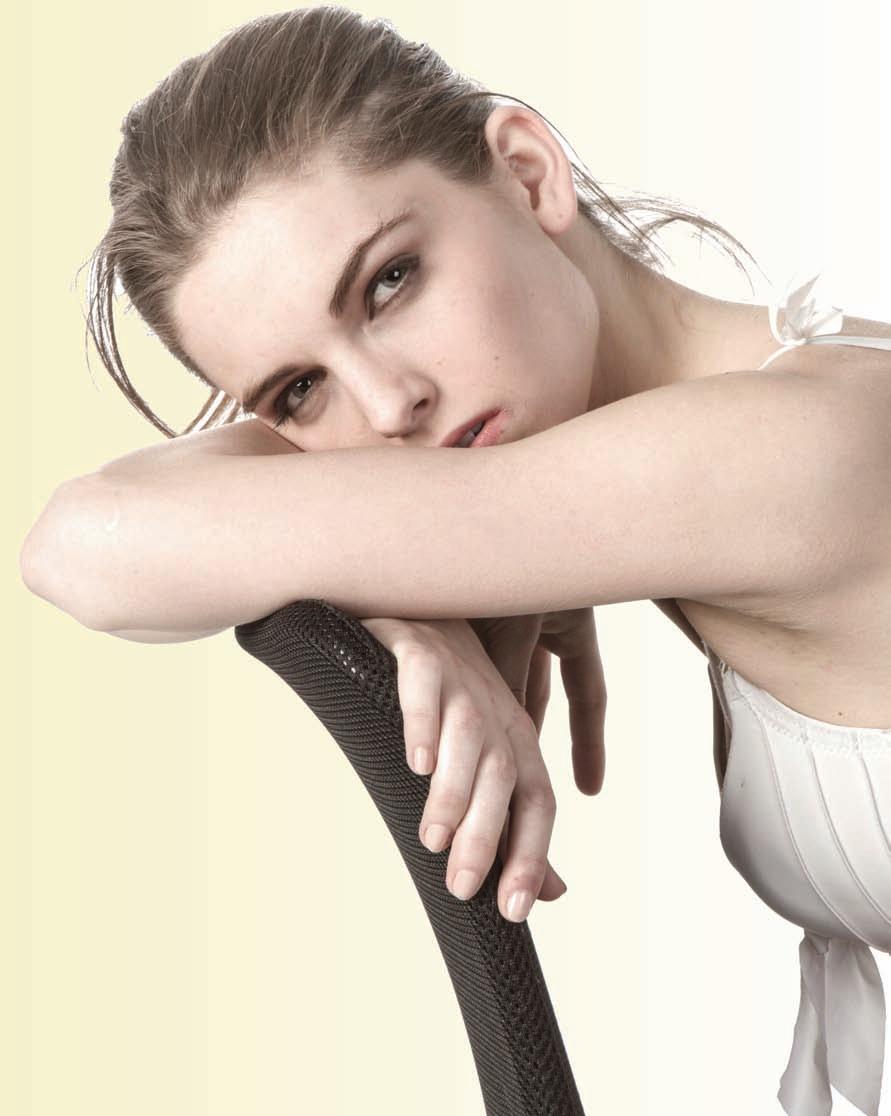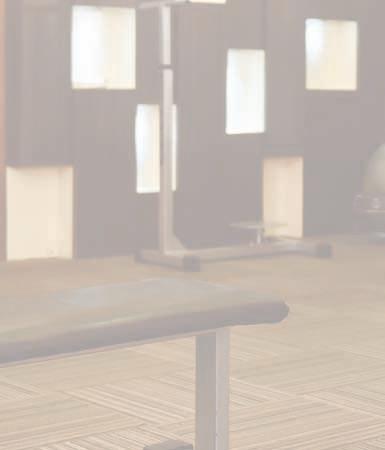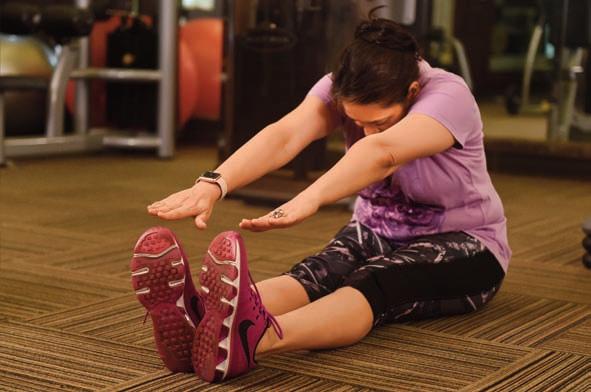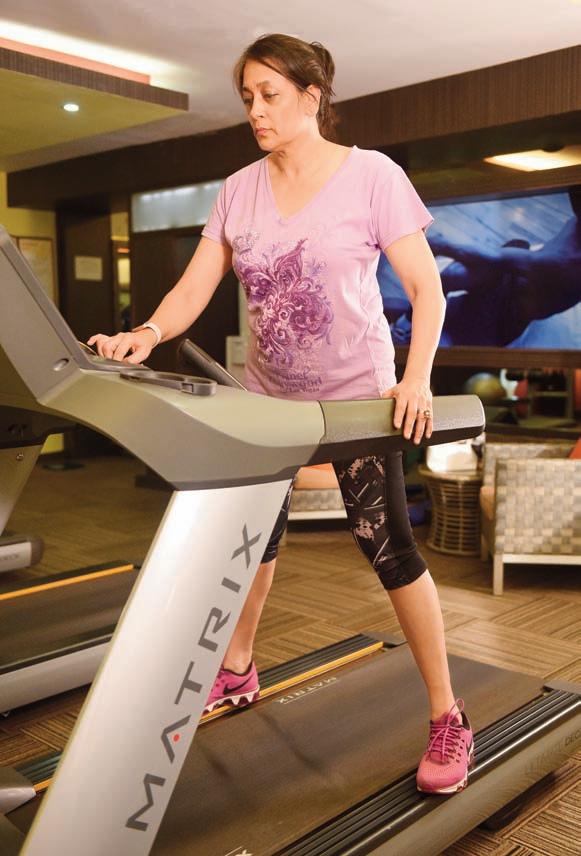
10 minute read
WHAT’S MAKING YOU SCRATCH?
from He & She Oct 2018
UK Man gets £50k bionic manhood in rare surgery
36 HE & SHE He spent 44 years without a penis A man who was born without a penis has had sex for the first time aged 45 - thanks to his new £50,000 (Rs 50 lac approx) bionic manhood. Andrew Wardle went through a painful ten-hour operation to be given the new device which was created using skin from his arm. After living as a virgin for all his life, Andrew, had the final part of his penile implant fitted at London's University Hospital. Now he has finally been able to do the deed with his girlfriend Fedra Fabian, using a button to pump it up, and is delighted with the result. After having sex for the first time Andrew also hopes to become a dad one day. Following his surgery, Andrew had to walk around with an erection for 10 days - and faced another six weeks until he could put it into action with girlfriend Fedra, 28. He now, uses a button in his groin to inflate the organ with saline fluid through a valve in his scrotum. “I had to test out the function every morning and night and leave it erect for 20 minutes. So one morning it just happened. It was nice and natural - and that’s how I wanted it to be." As well as experiencing pleasurable feelings, the organ is connected into his testicles which means there is a possibility of him having children. Andrew was born with bladder exstrophy, a rare birth defect that means the organ, that usually sits inside the pelvis, is exposed. Although he has testicles, the condition means he has no penis. Andrew has undergone a string of operations over the last four years to build his appendage. While bladder exstrophy typically affects one in every 40,000 births, Andrew said rare complications with his case only happens to one in around 20 million. Although the pioneering operation, in which surgeons have used muscle, nerves and skin from Andrew’s arm, marks a new chapter in his life, it hasn't been an easy journey. (Courtesy “The Mirror”, UK) The largest cell in the body is the female egg and the smallest is the male sperm.
Advertisement
DRY WEATHER Cold, dry weather can lead to major itching all over your body, including on the breasts and nipples. If that’s the cause, your nipples may look raw or chafed. Keep baths and showers to under 10 minutes. Use lukewarm water, gently pat your skin with a towel until it’s almost dry, and moisturize with a thick cream or ointment. Run a humidifier to add moisture.
ECZEMA It can cause a crusty rash on your nipples and the flat part around it, especially if you’ve had eczema before. Use a thick moisturizer with ceramides, a waxy ingredient that helps heal the skin. A topical steroid cream like hydrocortisone can help with swelling and itching. Your doctor can prescribe stronger prescription ointments. See them right away if you notice any oozing or tenderness, which could be a sign of infection.
SOAP Your new soap, lotion, or laundry detergent could be behind your itch. The chemicals in many cleansing products can cause a rash called contact dermatitis. Switch to soaps and cleansers that are hypoallergenic, unscented, and free of dyes, and you’ll know if that’s the problem.
UNDERGARMENTS Your breasts and nipples may be reacting to the elastic or dye used to make your bra or lingerie. Contact dermatitis can cause redness and itching on the areas of the skin that touch the fabric, like your nipples.
PREGNANCY Weight gain, morning sickness, hormone swings, and ... itchy nipples? Yep, add that to the list of symptoms of pregnancy. Blame it on hormone changes and skin stretching as your breasts and nipples expand to get ready for a nursing baby. Cocoa butter, coconut oil, or a lanolin ointment rubbed on the nipples can help.
BREASTFEEDING Milk residue, plugged milk ducts, and problems with your baby latching on during feedings all can make nipples itchy and sore. It’s important to keep the area clean and dry and to continue to pump or nurse. Lanolin ointment and silicone gel pads cooled in the refrigerator can help ease your discomfort.
THRUSH If you’re breastfeeding, and if your nipples and surrounding area are not only itchy but shiny or flaky, and you feel sharp pain while nursing, see your doc-
tor. Those are signs of thrush, a fungal infection.
MENOPAUSE This stage of your life can make your skin thinner, drier, and more easily irritated. Blame it on your hormones again. Your body makes less oil, so it’s harder for your skin to retain moisture. The itch can strike just about anywhere on the body, including the vagina and nipples. Fight the dryness by using mild cleansers, moisturizing often, and taking fewer hot showers.
RADIATION Treatment for breast canc er can lead to severe itching in the breasts and nipples, even long after it ends. Radiation kills skin cells and causes dryness, burning, and itching as the skin peels off. Massage the area with an ice cube, wear soft, loose-fitting clothes, and drink plenty of fluids. Oral antihistamines can help. Your doctor also can prescribe a corticosteroid to rub on the skin.
PAGET'S DISEASE This rare form of breast cancer starts in the breast ducts and spreads to the nipple and nearby area. It can look a lot like eczema. But it often affects just one nipple, and you may also see blood or yellow discharge. If the rash doesn’t respond to eczema treatments, you may need a biopsy of a tissue sample to be sure. Paget's disease usually is treated with surgery, followed by radiation.
BENIGN TUMOR Sometimes, a noncancerous tumor in the breast duct can cause an itchy, crusted nipple. You may feel a small lump or notice a clear or bloody discharge from the nipple. To make the diagnosis, your doctor may X-ray your breast duct or order an ultrasound, mammogram, or biopsy. The treatment is usually surgery.


What’s Making You Scratch? Why Do Nipples Itch? Mehga Vaswani lists the causes...
Lots of things can make your nipples itchy. They’re sensitive in general. They also stick out, and they can get irritated from friction, eczema, breastfeeding, or pregnancy. Rarely, itchy nipples can be a sign of a more serious condition. Even if your urge to scratch is great, the problem is usually easy to treat.
FIT @ 50
name: Dr sujata kar Profession: Gynaec & Endo-ART Specialist location: Bhubaneshwar, Odisha age: 55
what is your fitness routine? i try to workout for about an hour, at least 4-5 times a week, cardio and strength training at home. i work in a seven storey building and never ever take the lift.

Do you follow a particular diet plan? No diet plan. i believe in eating small portions multiple times. My diet heavy on nuts and fruits and i avoid deep fried, pickled, frozen and processed food.
how does your fitness routine help you de-stress? Over the years, working out becomes an addiction. Exercise relaxes, helps me sleep well and gives me peace of mind. You also come to love the “muscle burn” after a good workout.


suPPort actiVitY leVels with the right Diet Diet as well as exercise can have a major impact on energy, mood, and fitness. Older adults without kidney disease or diabetes should aim for about 0.5 grams of protein per pound of body weight. • Vary your sources of protein instead of relying on just red meat, including more fish, poultry, beans, and eggs. • Reduce the amount of processed carbohydrates you consume and replace them with high-quality protein. • Snack on nuts and seeds instead of chips, replace a baked dessert with Greek yogurt, swap out slices of pizza for a grilled chicken breast and a side of beans.
builDing a balanceD exercise Plan Staying active is not a science. The key is to find activities that you enjoy, based on the four building blocks of fitness. These are: 1: balance What it is: Maintains standing and stability, whether you’re stationary or moving around. Try yoga, Tai Chi, and posture exercises to gain confidence with balance.
2: cardio What it is: Uses large muscle groups in rhythmic motions over a period of time. Cardio workouts get your heart pumping and you may even feel a little short of breath. includes walking, stair climbing, swimming, hiking, cycling, rowing, tennis, and dancing.

3: strength and power training What it is: Builds up muscle with repetitive motion using weight or external resistance from body weight, machines, free weights, or elastic bands.
4: flexibility What it is: Challenges the ability of your body’s joints to move freely through a full range of motion. This can be done through stationary stretches and stretches that involve movement to keep your muscles and joints supple and less prone to injury. Yoga is an excellent means of improving flexibility.





mYths about actiVitY anD aging
myth 1: there's no point to exercising. i'm going to get old anyway. fact: Regular physical activity helps you look and feel younger and stay independent longer. it also lowers your risk for a variety of conditions, including Alzheimer’s and dementia, heart disease, diabetes, certain cancers, high blood pressure, and obesity.
myth 2: exercise puts me at risk of falling down. fact: Regular exercise, by building strength and stamina, prevents loss of bone mass and improves balance, actually reducing your risk of falling.

myth 3: i’m too old to start exercising. fact: You’re never too old to get moving and improve your health! in fact, adults who become active later in life often show greater physical and mental improvements than their younger counterparts.
myth 4: i can't exercise because i'm disabled. fact: Chair-bound people face special challenges but can lift light weights, stretch, and do chair aerobics, chair yoga, and chair Tai Chi to increase range of motion, improve muscle tone and flexibility, and promote cardiovascular health.
myth 5: i'm too weak or have too many aches and pains. fact: Getting moving can help you manage pain and improve your strength and self-confidence. The key is to start off gently.



EXCERCISE TIPS

warm uP anD stretching Before starting any form of exercise it is most important to warm up your body. Gradual warm up revs up your cardiovascular system by raising body temperature and blood flow to muscles. it also helps to reduce chances of muscle pain, soreness and injury. Stretching the muscles also prepares them for sustained physical activity and great for burning calories.
carDio As in running on a treadmill, elliptical or static bycycling is great for heart health. Low intensity, steady state cardio like brisk walking too is excellent and can be easily done by most people.
strength training Or weights are a very important part of physical fitness. Especially as you age. Multiple benefits are there, like increased muscle mass, fat burn, reduced muscle loss as you age, increased bone strength (very important to reduce fracture risk with age), increased tone and reduced sagging of skin.
HE & SHE Model: Dr Sujata Kar Photography: Akhil Ranjan Location Courtesy: Hotel Mayfair Lagoon, Bhubneshwar










